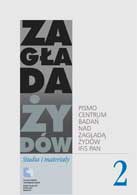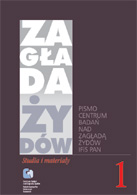Menu
- Strona główna
- Zespół Centrum
- Badania
- Publikacje
- Linki
- Kontakt
- Archiwum
- Zagłada Żydów. Studia i Materiały
pismo naukowe Centrum - Dalej jest noc - »Nieudana KOREKTA OBRAZU«
- Wybór źródeł
- EHRI PL
Aktualności
Otwarte Seminarium Naukowe Centrum: Karolina Koprowska, Rozczarowanie i nadzieja – dwa dyskursy o przyszłości Żydów w powojennej Polsce
Otwarte Seminarium Naukowe Karolina Koprowska "Rozczarowanie i nadzieja – dwa dyskursy o przyszłości Żydów w powojennej Polsce" Spotkanie odbędzie się w środę 10 grudnia br. w sali 161 w Pałacu Staszica (ul. Nowy Świat 72) o godz. 11.00...
Premiera książki Karolin Panz pt. Chciałabym opowiedzieć jak zginęło miasto
10 grudnia o godz. 18.00 zapraszamy do Muzeum POLIN na premierę książki Karoliny Panz pt. "Chciałabym opowiedzieć jak zginęło miasto. Zagłada żydowskich mieszkańców Nowego Targu". Z autorką rozmawiać będzie Anna Bikont Postanowiłam, że odtworzę i opiszę h...
International Summer School
CfP: International Summer School „Innovative Perspectives on Holocaust Research: Sources, Methods, and Digital Tools" UPDATE: NEW DEADLINE: DECEMBER 7, 2025 International Summer School „Innovative Perspectives on Holocaust Research: Sources, Me...
Spotkanie z Michałem Kowalskim wokół sokołowsko-węgrowskiego rozdziału DALEJ JEST NOC
Zapraszamy na spotkanie autorskie z Michałem Kowalskim autorem rozdziału dotyczącego powiatu sokołowsko-węgrowskiego w książce "OTO WIDAĆ i OTO SŁYCHAĆ. Świadkowie Zagłady w okupowanej Polsce" ...
Program seminariów naukowych Centrum na semestr zimowy 2025
Już za niespełna miesiąc wracamy z cyklem seminariów naukowych, na które serdecznie zapraszamy wszystkich zainteresowanych! Seminaria będą się odbywać w drugą lub trzecią środę miesiąca, stacjonarnie w Instytucie Filozofii i Socjologii PAN (ul. Nowy Świat 72, sala 161) ...
NEWSLETTER
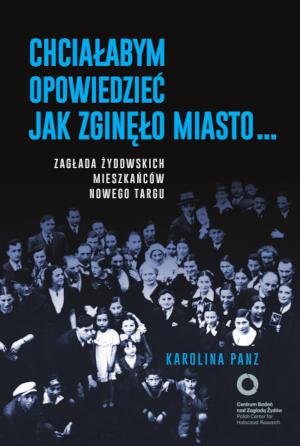 Chciałabym opowiedzieć jak zginęło miasto ...
Chciałabym opowiedzieć jak zginęło miasto ...
Zagłada Żydowskich mieszkańców Nowego Targu
Karolina Panz
Warszawa 2025

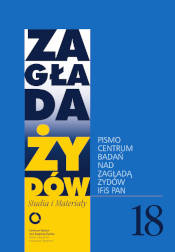 Zagłada Żydów.
Zagłada Żydów.
Studia i Materiały
nr 18, R. 2022
Warszawa 2022
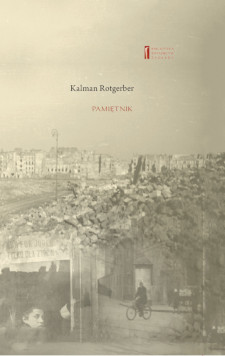 PAMIĘTNIK
PAMIĘTNIK
Kalman Rotgeber
oprac. Aleksandra Bańkowska, wstęp Jacek Leociak
Warszawa 2021
Zagłada Żydów.
Studia i Materiały
nr 17, R. 2021
Warszawa 2021
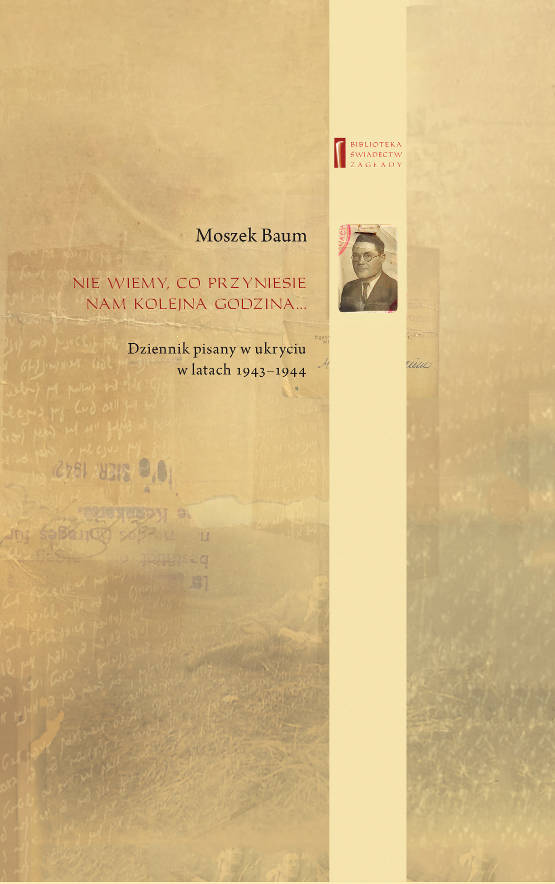 NIE WIEMY CO PRZYNIESIE NAM KOLEJNA GODZINA ...
NIE WIEMY CO PRZYNIESIE NAM KOLEJNA GODZINA ...
Dziennik pisany w ukryciu w latach 1943-1944
Moszek Baum, oprac. Barbara Engelking, tłum. z jidysz Monika Polit
Warszawa 2020
Zagłada Żydów.
Studia i Materiały
nr 16, R. 2020
Warszawa 2020
.jpg) Aryjskiego Żyda wspomnienia, łzy i myśli
Aryjskiego Żyda wspomnienia, łzy i myśli
Zapiski z okupacyjnej Warszawy
Sewek Okonowski, oprac. Marta Janczewska
 PISZĄCY TE SŁOWA JEST PRACOWNIKIEM
PISZĄCY TE SŁOWA JEST PRACOWNIKIEM
GETTOWEJ INSTYTUCJI ...
'z Dziennika' i inne pisma z łódzkiego getta
Józef Zelkowicz, tłum. z jidysz, oprac. i wstęp. Monika Polit
Warszawa 2019
CZYTAJĄC GAZETĘ NIEMIECKĄ ...
Dziennik pisany w ukryciu w Warszawie w latach 1943-1944
Jakub Hochberg, oprac. i wstępem opatrzyła Barbara Engelking
Warszawa 2019
Zagłada Żydów.
Studia i Materiały
nr 15, R. 2019
Warszawa 2019
.jpg) Zagłada Żydów.
Zagłada Żydów.
Studia i Materiały
nr 14, R. 2018
Warszawa 2018
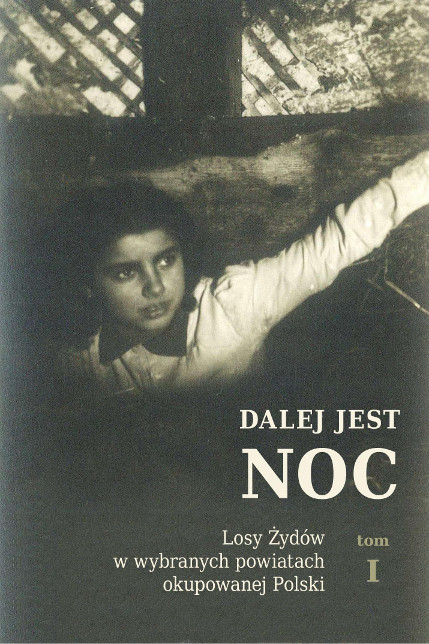 DALEJ JEST NOC. Losy Żydów w wybranych powiatach okupowanej Polski
DALEJ JEST NOC. Losy Żydów w wybranych powiatach okupowanej Polski
red. i wstęp Barbara Engelking, Jan Grabowski
Warszawa 2018
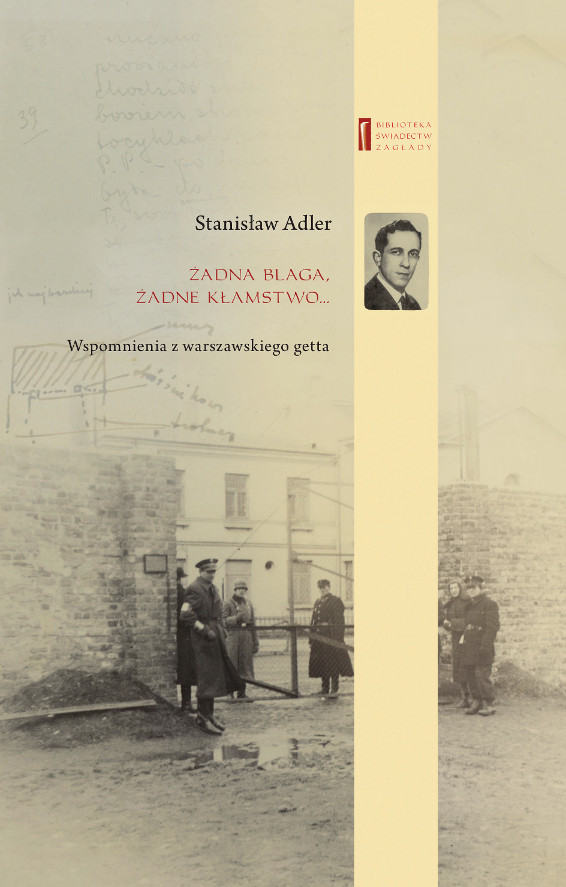 ŻADNA BLAGA, ŻADNE KŁAMSTWO ...
ŻADNA BLAGA, ŻADNE KŁAMSTWO ...
Wspomnienia z warszawskiego getta
Stanisław Adler, oprac. i wstępem opatrzyła Marta Janczewska
Warszawa 2018
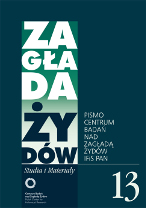 Zagłada Żydów.
Zagłada Żydów.
Studia i Materiały
nr 13, R. 2017
Warszawa 2017
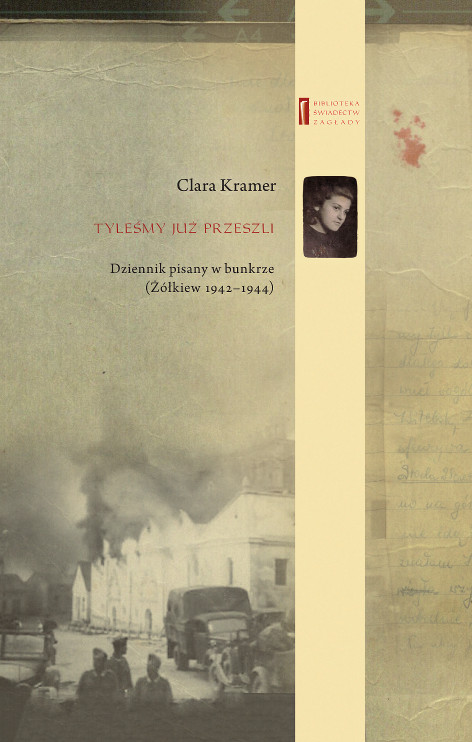 TYLEŚMY JUŻ PRZESZLI ...
TYLEŚMY JUŻ PRZESZLI ...
Dziennik pisany w bunkrze (Żółkiew 1942-1944)
Clara Kramer, oprac. i wstępem opatrzyła Anna Wylegała
Warszawa 2017
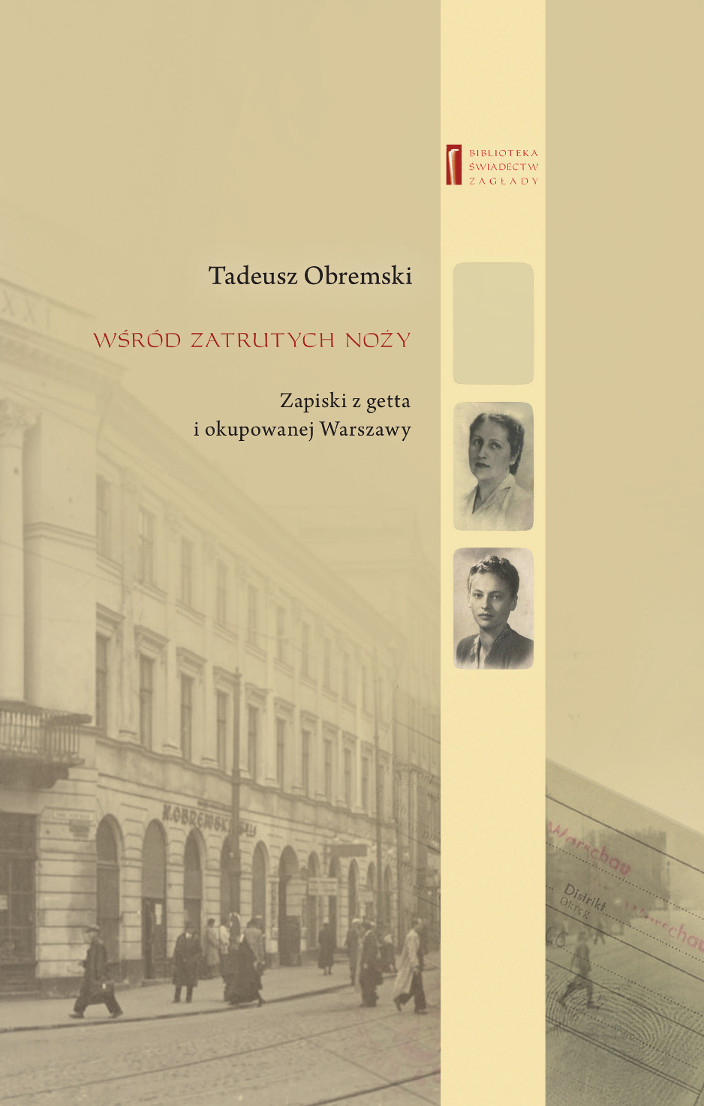 WŚRÓD ZATRUTYCH NOŻY ...
WŚRÓD ZATRUTYCH NOŻY ...
Zapiski z getta i okupowanej Warszawy
Tadeusz Obremski, oprac. i wstępem opatrzyła Agnieszka Haska
Warszawa 2017
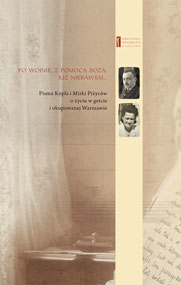 PO WOJNIE, Z POMOCĄ BOŻĄ, JUŻ NIEBAWEM ...
PO WOJNIE, Z POMOCĄ BOŻĄ, JUŻ NIEBAWEM ...
Pisma Kopla i Mirki Piżyców o życiu w getcie i okupowanej Warszawie
oprac. i wstępem opatrzyła Barbara Engelking i Havi Dreifuss
Warszawa 2017
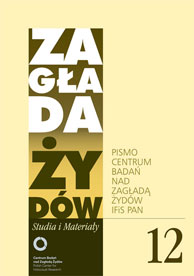 Zagłada Żydów.
Zagłada Żydów.
Studia i Materiały
nr 12, R. 2016
Warszawa 2016
.jpg) SNY CHOCIAŻ MAMY WSPANIAŁE ...
SNY CHOCIAŻ MAMY WSPANIAŁE ...
Okupacyjne dzienniki Żydów z okolic Mińska Mazowieckiego
oprac. i wstępem opatrzyła Barbara Engelking
Warszawa 2016
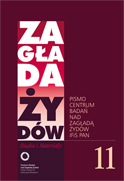 Zagłada Żydów.
Zagłada Żydów.
Studia i Materiały
nr 11, R. 2015
Warszawa 2015
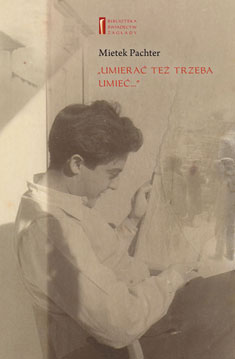 Mietek Pachter
Mietek Pachter
UMIERAĆ TEŻ TRZEBA UMIEĆ ...
oprac. B. Engelking
Warszawa 2015
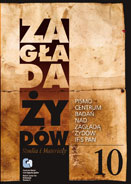 Zagłada Żydów.
Zagłada Żydów.
Studia i Materiały
nr 10, t. I-II, R. 2014
Warszawa 2015
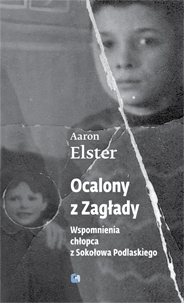 OCALONY Z ZAGŁADY
OCALONY Z ZAGŁADY
Wspomnienia chłopca z Sokołowa Podlaskiego
tłum. Elżbieta Olender-Dmowska
red .B. Engelking i J. Grabowski
Warszawa 2014
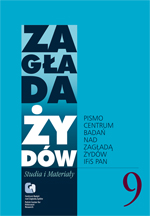 ZAGŁADA ŻYDÓW. STUDIA I MATERIAŁY
ZAGŁADA ŻYDÓW. STUDIA I MATERIAŁY
vol. 9 R. 2013
Pismo Centrum Badań nad Zagładą Żydów IFiS PAN
Warszawa 2013
 ... TĘSKNOTA NACHODZI NAS JAK CIĘŻKA CHOROBA ...
... TĘSKNOTA NACHODZI NAS JAK CIĘŻKA CHOROBA ...
Korespondencja wojenna rodziny Finkelsztejnów, 1939-1941
oprac. i wstępem opatrzyła Ewa Koźmińska-Frejlak
Warszawa 2012
Raul Hilberg
PAMIĘĆ I POLITYKA. Droga historyka Zagłady
tłum. Jerzy Giebułtowski
Warszawa 2012
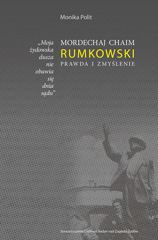 Monika Polit
Monika Polit
"Moja żydowska dusza nie obawia się dnia sądu."
Mordechaj Chaim Rumkowski. Prawda i zmyślenie
Warszawa 2012
.jpg) Dariusz Libionka i Laurence Weinbaum
Dariusz Libionka i Laurence Weinbaum
Bohaterowie, hochsztaplerzy, opisywacze. Wokół Żydowskiego Związku Wojskowego
Warszawa 2011
.jpg) Zagłada Żydów.
Zagłada Żydów.
Studia i Materiały
R. 2011, nr. 7; Warszawa 2011
.jpg) Jan Grabowski
Jan Grabowski
JUDENJAGD. Polowanie na Żydów 1942.1945.
Studium dziejów pewnego powiatu
Warszawa 2011
.jpg) Stanisław Gombiński (Jan Mawult)
Stanisław Gombiński (Jan Mawult)
Wspomnienia policjanta z warszawskiego getta
oprac. i wstęp Marta Janczewska
Warszawa 2010
Holocaust Studies and Materials
Journal of the Polish Center for Holocaust Research
Warssaw 2010
.jpg) Żydów łamiących prawo należy karać śmiercią!
Żydów łamiących prawo należy karać śmiercią!
"Przestępczość" Żydów w Warszawie, 1939-1942
B. Engelking, J. Grabowski
Warszawa 2010
Zagłada Żydów.
Studia i Materiały
R. 2010, nr. 6; Warszawa 2010
Wybór źródeł do nauczania o zagładzie Żydów
Ćwiczenia ze źródłami
red. A. Skibińska, R. Szuchta
Warszawa 2010
.jpg) W Imię Boże!
W Imię Boże!
Cecylia Gruft
oprac. i wstęp Łukasz Biedka
Warszawa 2009
Zagłada Żydów.
Studia i Materiały
R. 2009, nr. 5; Warszawa 2009
.jpg) Żydzi w powstańczej Warszawie
Żydzi w powstańczej Warszawie
Barbara Engelking i Dariusz Libionka
Warszawa 2009
 Reportaże z warszawskiego getta
Reportaże z warszawskiego getta
Perec Opoczyński
Warszawa 2009
 Notatnik
Notatnik
Szmul Rozensztajn
Warszawa 2008
.jpg) Holocaust
Holocaust
Studies and Materials.
English edition
2008, vol. 1; Warsaw 2008
.jpg) Źródła do badań nad zagładą Żydów na okupowanych ziemiach polskich
Źródła do badań nad zagładą Żydów na okupowanych ziemiach polskich
Przewodnik archiwalno-bibliograficzny
Alina Skibińska, wsp. Marta Janczewska, Dariusz Libionka, Witold Mędykowski, Jacek Andrzej Młynarczyk, Jakub Petelewicz, Monika Polit
Warszawa 2007
Zagłada Żydów. Studia i Materiały
R. 2007, nr. 3; Warszawa 2007
Prowincja noc.
Życie i zagłada Żydów w dystrykcie warszawskim
Warszawa 2007
.jpg) Utajone miasto.
Utajone miasto.
Żydzi po 'aryjskiej' stronie Warszawy [1941-1944]
Gunnar S Paulsson
Kraków 2007
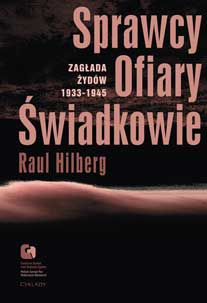 Sprawcy, Ofiary, Świadkowie.
Sprawcy, Ofiary, Świadkowie.
Zagłada Żydów, 1933-1944
Raul Hilberg
Warszawa 2007
Zagłada Żydów. Studia i Materiały
R. 2006, nr. 2; Warszawa 2006
"Jestem Żydem, chcę wejść!".
Hotel Polski w Warszawie, 1943.
Agnieszka Haska
Warszawa 2006
Zagłada Żydów. Studia i Materiały
R. 2005, nr. 1; Warszawa 2005
.jpg) 'Ja tego Żyda znam!'
'Ja tego Żyda znam!'
Szantażowanie Żydów w Warszawie, 1939-1943.
Jan Grabowski
Warszawa 2004
 'Szanowny panie Gistapo!'
'Szanowny panie Gistapo!'
Donosy do władz niemieckich w Warszawie i okolichach, 1940-1941
Barbara Engelking, Warszawa 2003
aaa
ul. Nowy Świat 72, 00-330 Warszawa;
Palac Staszica pok. 120
e-mail: centrum@holocaustresearch.pl
recenzja The New York Review of Books
źródło: The New York Review of Books
 Żydzi, Polacy i Naziści: tragiczna historia
Żydzi, Polacy i Naziści: tragiczna historia
Timothy Snyder
Remembering Survival: Inside a Nazi Slave-Labor Camp
by Christopher R. Browning
Norton, 375 pp., $27.95
Żydzi w powstańczej Warszawie [Jews in Insurrectionary Warsaw, 1944]
by Barbara Engelking and Dariusz Libionka
Polish Center for Holocaust Research, 358 pp., zł44.0
Poniżej fragmenty w tłum. na jęz. polski J. Giebułtowskiego
pełna wersja w jęz. angielskim >>>
W 1943 r. Armia Krajowa stanęła przed nierozstrzygalnym dylematem: Niemcy przegrywały wojnę, a wygrywały ją Sowiety. W lutym tego roku, pod Stalingradem, Wehrmacht poniósł pierwszą wielką klęskę. Od tej pory Armia Krajowa zmuszona była stawiać opór Niemcom i jednocześnie przygotowywać się na wkroczenie Sowietów. W kwietniu propaganda niemiecka ujawniła, przedstawiając trudne do odparcia dowody, że Sowieci rozstrzelali w Katyniu tysiące oficerów polskich. Stalin wykorzystał fakt ujawnienia dokonanej przezeń masakry jako pretekst do zerwania stosunków dyplomatycznych z Polską. Była to niewątpliwa oznaka ambicji imperialnych. Skoro Stalin nie uznawał prawowitego rządu RP podczas wspólnej wojny z nazistowskimi Niemcami, dlaczego miałby popierać niepodległość Polski po zwycięstwie sowieckim?
Wkraczająca na kresy wschodnie Armia Czerwona rozbrajała oddziały Armii Krajowej. Wydaje się, że jedyną nadzieją, jaką mogła żywić Armia Krajowa było antyniemieckie powstanie w Warszawie, rozpoczęte w chwili, która z jednej strony pozwalałaby wykorzystać fakt zbliżania się wojsk sowieckich, poprzedzając jednak ich wkroczenie do miasta. Celem było oswobodzenie Warszawy od okupacji niemieckiej rękami polskimi oraz utworzenie rządu przed nadejściem Armii Czerwonej. Pod koniec lipca 1944 r., gdy Żydów z Wierzbnika deportowano do Auschwitz, Armia Czerwona zbliżał się do Warszawy. 1
sierpnia 1944 r. wybuchło Powstanie Warszawskie. Armia Krajowa walczyła z Niemcami przez osiem tygodni. Bitwa ta trwałą dłużej niż kampania wrześniowa czy kampania francuska z 1940 r., przy porównywalnych stratach. Jak wynika z pionierskiego studium Dariusza Libionki i Barbary Engelking, Żydzi wzięli udział w powstaniu, większość z nich w szeregach Armii Krajowej. Część z nich stanowi Polacy żydowskiego pochodzenia, uważający się lub podający się za Polaków, będący członkami Armii Krajowej od początku jej istnienia. Inni byli weteranami powstania w getcie warszawskim. Znacznie większą grupę stanowili ocalali, którzy opuścili warszawskie kryjówki, by stanąć do walki, uznając za rzecz oczywistą, że w walce z Niemcami staną po stronie Polaków. Jak to ujął Michał Zylberberg: „Polacy stanęli do walki ze śmiertelnym wrogiem, i naszym obowiązkiem – jako ofiar i współobywateli – było udzielić im pomocy.” Powstanie Warszawskie było jednym z najważniejszych przykładów zbrojnego oporu Żydów podczas II wojny światowej. W istocie, bardzo możliwe, że w Powstaniu Warszawskim wzięło udział więcej Żydów niż w powstaniu w getcie warszawskim.
Powstanie Warszawskie, podobnie jak wcześniejsze powstanie w getcie, poniosło klęskę. Armia Krajowa, podobnie jak rok wcześniej Żydzi, walczyła właściwie sama. Stalin nie wyraził zgody na zrzuty alianckie, które mogłyby pomóc powstańcom. Niemcy utrzymali linię Wisły, na której zatrzymała się Armia Czerwona. Polski opór w Warszawie zdławiły najbardziej okrutne formacje SS i policji, zabijając co najmniej 120 tys. cywilów.
Ludzie ci zginęli nie tylko dlatego, że rozkaz ich zabicia otrzymały oddziały niemieckie, ale również dlatego, że Stalin do tego dopuścił. W rzeczy samej Armię Czerwoną zatrzymał stanowczy opór niemiecki na linii Wisły, jednakże to że stała ona na tych samych pozycjach przez kolejne pięć miesięcy należy uznać za akt polityczny. Fakt ten przesądził o losie Polaków (i Żydów) walczących w Powstaniu Warszawskim. Niemcy zabijali ludzi, którzy – zdaniem Stalina – opieraliby się narzuconej władzy komunistycznej.
[...]
Jak już napisaliśmy, legenda o nieskazitelnej Armii Krajowej, kultywowana przez polskich weteranów i patriotów, jest nie do utrzymania. Istniała rozbieżność między czynami żołnierzy a deklaracjami płynącymi z Londynu, między tym, co działo się w poszczególnych regionach i oddziałach, widoczne było też przekonanie, że Żydzi nie są częścią narodu polskiego, widoczna był nieczułość na niebezpieczeństwo, na jakie Żydzi byli wystawieni, dochodziło nawet do zwykłych mordów. Ustalenie proporcji między tymi zjawiskami nie jest tylko sprawą Żydów i Polaków. Armia Krajowa był najbardziej znaczącym, niekomunistycznym ruchem oporu w okupowanej przez nazistów Europie. Ci, którzy uważają, że opór wobec Hitlera jest miarą moralności powinni potraktować tę historię bardzo poważnie.
Jews, Poles & Nazis: The Terrible Story
by Timothy Snyder
Remembering Survival: Inside a Nazi Slave-Labor Camp
by Christopher R. Browning
Norton, 375 pp., $27.95
Żydzi w powstańczej Warszawie [Jews in Insurrectionary Warsaw, 1944]
by Barbara Engelking and Dariusz Libionka
Polish Center for Holocaust Research, 358 pp., zł44.0
The hangings took place on the last day of August 1941, on the town square of Wierzbnik, in what had once been central Poland. Two years had passed since the joint German-Soviet invasion that had destroyed the Polish state; ten weeks before, the Germans had betrayed their ally and invaded the Soviet Union. Wierzbnik, home to Poles and Jews, lay within the General Government, a colony that the Germans had made from parts of their Polish conquests. As Poles left church that Sunday morning, they saw before them a gallows. The German police had selected sixteen or seventeen Poles—men, women, and at least one child. Then they ordered a Jewish execution crew, brought from the ghetto that morning, to carry out the hangings. The Poles were forced to stand on stools; then the Jews placed nooses around their necks and kicked the stools away. The bodies were left to dangle.1
Demonstrative killing of civilians was one of several German methods designed to stifle Polish resistance. The Germans had murdered educated Poles: tens of thousands in late 1939, thousands more in early 1940. Since June 1940, the Germans had been sending suspect Poles to Auschwitz and other camps. Polish society was to be reduced to an undifferentiated mass of passive workers. German policy toward Jews was different, though the nature of the difference was not yet clear. Jewish elites had been preserved; some of them as members of the Judenrat (Jewish council) or as policemen directing the local affairs of Jews in a way that suited Germans.
Although fatality rates in some ghettos were high, Jews in summer 1941 had little idea that they had been gathered into ghettos in preparation for a “Final Solution.” The Germans had first planned to deport the Jews to a reservation in eastern Poland, or to the island of Madagascar, or to Siberian wastelands. As these schemes proved impracticable, the Jews remained in the ghettos. It was in that final week of August 1941 that the German “Final Solution” was taking on its final form: mass murder. Two days before the hangings at Wierzbnik, the Germans had completed their first truly large-scale murder of Jews, shooting some 23,600 people at Kamianets-Podil’s’kyi in occupied Soviet Ukraine.
“I knew I hanged the right people,” one of the Jewish hangmen in Wierzbnik recalled more than fifty years later. He thought that those who were executed belonged to the Polish Home Army, and as such were guilty of murdering Jews. The people in question died, of course, not because Poles were killing Jews, but because Poles were resisting German rule. The hangings at Wierzbnik were a typical German reprisal, aiming to spread terror and deter further opposition. If it were not for the testimonies of the Jews from Wierzbnik, this particular event would have been lost. For most of them, it was a first stark demonstration of German mass murder, if only a small foretaste of what was to come.
In his magnificent and humane microhistory, Christopher Browning has drawn on the “written, transcribed, and/or taped accounts of 292” Jewish survivors, most of them from Wierzbnik, who shared a similar experience of the war. He treats these testimonies as historical sources, believing that according them “a privileged position not subject to the same critical analysis and rules of evidence as other sources will merely discredit and undermine the reputation of Holocaust scholarship itself.”
Here, in recounting how a Jew forced by Germans to kill Poles blamed the Poles for their fate, Browning reaches the problem of Polish–Jewish relations.2 While he is quite aware that this particular testimony must be subjected to scrutiny, his analysis consists mainly in the comparison of multiple Jewish testimonial sources. Addressing the evidence of the Jewish hangman, Browning characterizes the Home Army as a “conservative nationalist underground movement” that did indeed kill Jews, but perhaps not at early as 1941. This description may reflect a consensus among surviving Wierzbnik Jews; it does not fit the historical Home Army.
Interestingly, the “Polish underground” makes several appearances in Browning’s book, usually behaving in ways that are remembered positively: shooting Germans, attacking camps, helping Jews. The Home Army, meanwhile, appears in this negative light, as murderous and anti-Semitic. There is a problem here: the Home Army was the Polish underground. Aiming to restore Polish independence from German rule, it united hundreds of resistance groups. It represented a very wide spetrum of opinion, excluding only the communist left and the extreme nationalist right. And it was not just an underground movement: it was an integral part of the Polish armed forces, under the command of the exile government in London, allied with Great Britain and the United States in the war against Nazi Germany.3
Although the Home Army’s enemy was Nazi Germany, anti-Semitism was indeed a problem in its ranks. On Rosh Hashanah, three weeks after the hangings in Wierzbnik, Polish Prime Minister Władysław Sikorski sent his good wishes from London to the Jewish citizens of Poland via the BBC. Stefan Rowecki, the commander of the Home Army in Warsaw, was irritated; such gestures, he thought, made “the worst possible impression” among Poles. This revealed a basic tension, apparent throughout 1941, between the Polish exile government and its underground army. Anti-Semitism, Rowecki seemed to think, was so pervasive that the Jewish issue should be tabled until war’s end. Many Poles had been inclined to support anti-Semitic parties in the 1930s, and the experience of German and Soviet occupation had not helped.4
Some Poles claimed to resent the Jews who had taken up positions of authority in the Soviet occupation apparatus in eastern Poland between 1939 and 1941, after the Soviet invasion of that part of the country. Other Poles were corrupted by having taken over Jewish houses or apartments when Jews were forced into ghettos in 1940 and 1941. Throughout 1941, Poles were debating the political and civic status that Jews should have in Poland after the war. The exile government took the view that postwar Poland would be a democracy without racial discrimination. Within the government, however, nationalists questioned this position.
Polish wartime debates about the “Jewish question” ceased only when Adolf Hitler’s answer became clear. The condition of Polish Jews became a pressing question for the exile government and the Home Army when the Germans began to gas Jews in the final weeks of 1941. In early 1942, Polish leaders believed that news of the shocking German campaign would prompt action from Great Britain and the United States. The Home Army thought that the revelation of the existence of gassing facilities would force the Germans to stop. It transmitted to London the documentation about the death factory at Chełmno that had been gathered by the ghetto historian Emanuel Ringelblum. This led to BBC broadcasts about the mass extermination of Polish Jews. The Polish government in London, though always presenting Jewish suffering as part of a larger story of Polish martyrdom, gave the mass murder of Jews as a reason for the British and the Americans to carry out retributions against German civilians. In vain: the Germans were not shamed by the publicity, and the Western allies took no meaningful action.5
In 1942, in Operation Reinhard, the Germans deported some 1.3 million Polish Jews from ghettos in the General Government to death factories at Treblinka, Bełz˙ec, and Sobibór. The asso- ciated mass deportations of the Jews of Warsaw, which began on July 22, forced the local Home Army into action. It supplied false documentation to Jewish survivors, supported Z•egota, the Polish government organization that aided Jewish survivors, and assisted Jews within the Warsaw Ghetto who were planning an uprising. Operation Reinhard reached the town of Wierzbnik on October 27. As Browning shows, an unusually high proportion of Wierzbnik Jews, some 1,200 men and four hundred women, were selected for labor. Browning provides a heartrending depiction of the selections that separated those who would work for the Germans from the nearly four thousand who would be gassed at Treblinka.
This scene was repeated thousands of times in occupied Poland, but rarely if ever has it been rendered in such detail from so many perspectives. Some families were forced apart. Others divided themselves, not knowing which group was the better one. Some people left their families behind. Others stayed with their families when they might have saved themselves. Others still contrived to take their families with them into labor duty. Browning gently evokes the kinds of morality that could function in such a situation of extremity. He does not expect his sources to provide an example of ethical behavior: “We must be grateful for the testimonies of those who survived and are willing to speak, but we have no right to expect from them tales of edification and redemption.” But he does draw attention to the loyalties that did function: the bonds among families, lovers, and friends.
The Wierzbnik Jews selected for labor were in an exceptional position. By late October 1942, more than two million Polish Jews were already dead, shot in what had been eastern Poland or gassed at Treblinka, Bełz˙ec, Sobibór, or Chełmno. In 1943 and 1944, as hundreds of thousands more Polish Jews were gassed at Auschwitz or shot in the East, Wierzbnik Jews continued to live and work. They owed their survival to an accident of geography: their homes were very near the Polish arms factory at Starachowice, now taken over by the Germans. Jewish labor at Starachowice was important to the German war effort. The Starachowice camps were not under the direct authority of the SS, but rather run by a private business, operating within a larger holding company. As in the Wierzbnik ghetto, daily authority over Jews in the Starachowice camps was in the hands of a Jewish council and Jewish police force. These institutions, which drew heavily from families that had been prosperous before the war, distributed labor assignments on the basis of connections and bribes. German personnel were few, and the guards were stationed outside the camps.
There was little need to guard the camps: in 1943 in occupied Poland, Starachowice was a place Jews escaped to, not a place they escaped from. When Jews from Majdanek were transferred to Starachowice, they could hardly believe their eyes. The place was filthy and the work was dangerous, but Jews remained alive in large numbers, sometimes even with their children. Some were able to supplement their minimal food rations by selling belongings that they had left for safekeeping with Wierzbnik Poles. Jews at Starachowice bribed camp guards to accompany them to Wierzbnik, where they would carry out these transactions. Then they returned to the camps with the food. To escape from Starachowice would be to court death. Jews found by Germans would be shot. Although thousands of Poles aided Jews despite the death sentence they faced for doing so, it would be an extraordinary gamble to trust any given Pole. In this part of occupied Poland there was no underground army that Jews knew would accept them, and no Jewish armed force that could protect them.
The major Jewish armed rebellion against German rule in the General Government, the Warsaw Ghetto Uprising of April–May 1943, had aimed not at survival but rather at the choice of the manner of death. It had involved a certain alliance between Poles and Jews, but one that did not endure. The Warsaw branch of the Home Army had given Jews a substantial part of its modest weapons cache. Seven of the first eight armed actions taken by the Home Army in Warsaw were in support of the ghetto. This was symbolic: as everyone knew, the Home Army in Warsaw could not have saved the Jews of the ghetto in April 1943, even had it devoted all of its troops and weapons to this purpose. After the Ghetto Uprising was crushed, Home Army commanders failed to enlist surviving Jewish fighters. Thus even Jews with combat experience found themselves hunted in occupied Poland in 1943. Jews had to fear not only the Germans, but also local units of the Home Army who (on several documented occasions) shot them as bandits or (on a few documented occasions) shot them to steal their belongings.
From the perspective of the Home Army, 1943 was the year of an irresolvable dilemma: the Germans were losing the war, but the Soviets were winning it. In February the Red Army had dealt the Wehrmacht its first major defeat, at Stalingrad. Henceforth, the Home Army had to resist the Germans while preparing for the arrival of the Soviets. German propaganda drove the point home that April, revealing that the Soviets had shot thousands of Polish officers at Katyn. Stalin used the revelation of his own mass murder as a pretext to break diplomatic relations with Poland.6 This was an unmistakable sign of imperial ambition. If Stalin would not recognize the legitimate Polish government during a common war against Nazi Germany, why would he endorse Polish independence after a Soviet victory?
Some Home Army commanders feared that arming Polish Jews would ease the spread of Soviet power. Though this sometimes took the form of an anti-Semitic stereotype of the Jew as Communist, the concern was not entirely unjustified. The Polish Communist party was part of the Jewish Combat Organization, which the Home Army had supplied with arms. The man who negotiated those arms transfers, Aryeh Wilner, was also negotiating with Communists. The Jewish representative within the Polish government department charged with rescuing Jews, Adolf Berman, was also in touch with the Communists. (His brother Jakub would later preside over the Communist security apparatus that would persecute Home Army veterans—including those who had aided Jews.)7 For the Home Army, the Soviet advance meant the arrival of a dubious ally against the Germans as well as an impending threat to Polish independence. For Jews it meant life. This basic difference in perspectives, a result of the Holocaust, was difficult to overcome.
For Jews at Starachowice, only labor counted. As Browning masterfully reconstructs daily life within the factory camps, he reveals what Jews knew about their fate and the limits of their local perspective. When typhus broke out, for example, the Germans at first simply shot the Jews who were infected. So long as Jewish labor was available for rent from the SS, shooting sick Jews was the economically rational thing to do. As the war continued and the number of living Jews plunged, the Germans treated sick Jews rather than killing them. Jews remembered this as a change in the camp regime; Browning recalls the larger causes.
In late 1943, Heinrich Himmler liquidated most of the camps in the General Government where Jews were used as labor, and had tens of thousands of Jewish workers shot. The directors of Starachowice sacrificed some of the women and children to Himmler, but preserved the men. Because their business was making arms, they could evade the policy of murdering all Jews. Only the Red Army’s successful offensive in June 1944 forced the closure of the factory camps at Starachowice. In July the Jewish laborers at Starachowice were sent to Auschwitz. Mortality rates in one of the railcars was high, but not only because of the transport conditions: some of the stronger prisoners took the opportunity to beat the members of the camp council to death.
The Red Army was disarming Home Army units as it entered eastern Poland. The Home Army’s only hope seemed to be an uprising against the Germans in Warsaw, timed to exploit the Soviet advance but precede the actual arrival of Soviet troops. The aim was to liberate Warsaw from German occupation by Polish efforts, and to install a Polish government before the Red Army arrived. In late July 1944, as the Wierzbnik Jews were sent to Auschwitz, the Red Army approached Warsaw. On August 1, 1944, the Warsaw Uprising began. The Home Army fought the Germans there for eight weeks: a longer battle than either the Polish campaign of 1939 or the French campaign of 1940, and with casualties comparable to both. As Dariusz Libionka and Barbara Engelking demonstrate in their pioneering study, Jews took part in the battle, most of them in the Home Army.8 Some of these were people of Jewish origin who regarded or presented themselves as Poles and had been in the Home Army all along. Others were veterans of the Ghetto Uprising. More were survivors who left their places of shelter in Warsaw in order to fight, seeing it as self-evident that they would help Poles fight Germans. As Michał Zylberberg put it, “The Poles had risen to fight against the mortal enemy, and it was our obligation, as victims and as fellow citizens, to help them.” The Warsaw Uprising was a major example of armed Jewish resistance to the Germans during World War II. Indeed, it is quite possible that more people of Jewish origin took part in the Warsaw Uprising of 1944 than in the Ghetto Uprising of 1943.
The Warsaw Uprising, like the Ghetto Uprising before it, was defeated. The Home Army, like the Jews the previous year, fought essentially alone. Stalin forbade Allied air drops when they might have helped. The Germans held the line at the Vistula River, and the Red Army halted. Some of the most brutal German SS and police formations defeated the Polish resistance in Warsaw, killing at least 120,000 Polish civilians.
These people perished not only because German forces were ordered to kill them, but also because Joseph Stalin allowed them to die. The Red Army was indeed halted by the stubborn German defense at the Vistula, but its encampment there for five months must be understood as a political act. It doomed the Poles (and the Jews) who were fighting the Germans in Warsaw. The Germans killed people who, as Stalin knew, would also have resisted the imposition of Communist rule.
The Germans were able to empty not only Starachowice, but also the last ghetto in occupied Poland, in Łódz´. In July 1944, Łódz´ Jews knew that the Red Army was nearby, and thought they could be liberated in a matter of days. Some 67,000 Jews were transported from Łódz´ to Auschwitz while the Warsaw Uprising was taking place. Whereas the Wierzbnik Jews were not subjected to a selection at the ramp at Birkenau, most of the Łódz´ Jews were gassed upon arrival.9
By the time the Red Army finally reached Warsaw in January 1945, the Wierzbnik Jews, Łódz´ Jews, and other Jews were being marched from Auschwitz to labor camps in Germany, where they would remain until the end of the war. This ordeal was deadlier for the Wierzbnik Jews than Starachowice and Auschwitz; hundreds died in a matter of a few months. After the Red Army took Berlin in May, Polish- Jewish survivors found their way to displaced-persons camps in Germany. A few dozen Wierzbnik Jews were able to return to Poland and their hometown, where they were greeted with ugly threats from the Poles who had stolen their houses. In June a few returning Wierzbnik Jews were murdered by Poles. One Jew was beheaded. In Poland as a whole, hundreds of Jews were murdered by Poles in the months after the war was over.
Growning concludes from this horrible finale that the goal of the Polish underground was the end of Jewish life in Poland. He adds that the Polish nation was defined in opposition to an enemy image of the Jew. As Browning acknowledges, it is not at all clear that members of the Home Army committed the murders and robberies in Wierzbnik; the Jews upon whose testimony Browning relies could not have known this. However that may be, it is misleading to discuss Polish political aims only in the light of these events. If Polish patriotism was simply a matter of hating Jews, why did the Home Army fight the Nazis with such determination?
Officially, the Home Army was fighting for constitutional liberal democracy and equal rights for all citizens; what its victory or indeed what democratic elections would have brought to Poland we will never know. After intimidation campaigns and faked elections, Poland became a Soviet satellite governed by a Communist regime. We owe the description of the Home Army as a reactionary nationalist clique to Soviet and Polish Communists, whose forces defeated its stubborn remnants, tortured its best officers, and hanged its last commander after a show trial.
In Stalinist Poland, only Communist resistance to the Germans was recognized as such; everything else was fascism. Communists had no difficulty whatsoever in conflating the people who had fought the Nazis with the Nazis themselves. The Ghetto Uprising was celebrated as Communist (though it was not); the Warsaw Uprising was denounced as fascist (though it was not). Yet we owe the stark separation of the two events to national as well as to Communist politics. The Ghetto Uprising is a founding myth of the State of Israel, and the Warsaw Uprising is a founding myth of today’s post-Communist Poland: this, too, keeps the two events further apart in memory than they were in history.
Though the record of the Home Army toward Jews is ambivalent, the dark legend must be abandoned. Important as Jewish testimonial material is to the history of the Holocaust, the recollections of Jews who spent years in camps cannot serve as the basis for historical reckonings with the Home Army. If its history were to be written from Jewish perspectives, these would have to include those of people such as Chaja and Estera Borenstein, who volunteered as nurses at the beginning of the Warsaw Uprising, or Marian Mendenholc, who died trying to rescue Polish comrades right at its very end. It would have to allow for the experiences of Jews such as Stanisław Aronson. Fighting in the most celebrated unit of the Home Army in the Warsaw Uprising, Aronson stormed Umschlagplatz, from which he himself had been deported to Treblinka two years before. Then he and his Polish comrades liberated a concentration camp on the ruins of the Warsaw Ghetto, and freed several hundred Jews.
That said, the pristine legend of an unblemished Home Army, cultivated by Polish veterans and patriots, is also unsustainable. There was distance between soldiers in the field and declarations from London, variation among regions and units, reluctance to see Jews as part of the Polish nation, insensitivity to the particular dangers faced by Jews, and occasional outright murder. Getting the balance right is not just a matter for Jews and Poles. The Home Army was the most significant non-Communist resistance movement in Nazi-occupied Europe. Those who regard opposition to Hitler as a measure of morality will have to take its history seriously.
_______________________________
1. On Christopher Browning's evidence, the hanging might have taken place one week earlier or later.
2. A similar issue arises in Snyder, "Nazis, Soviets, Poles, Jews," The New York Review, December 3, 2009.
3. It was known as the Union of Armed Struggle through 1941. The Polish government left Paris for London in 1940.
4. Arrested by the Gestapo in 1943, Rowecki was executed in Sachsenhausen in 1944.
5. See Adam Puławski, W obliczu Zagłady: Rza˛d RP na Uchodz´stwie, Delegatura Rza˛du RP na Kraj, ZWZ-AK wobec deportacji Z•ydów do obozów zagłady (1941–1942) (Lublin: IPN, 2009).
6. See Katyn: A Crime Without Punishment, edited by Anna Cienciala, Natalia Lebedeva, and Wojciech Materski (Yale University Press, 2007).
7. One of these was Władysław Bartoszewski (1922–), a fascinating figure who awaits a scholarly biography.
8. The (nationalist) National Armed Forces and the (Communist) People's Army also fought in the Warsaw Uprising.
9. Andrea Löw, Juden im Getto Litzmannstadt: Lebensbedingungen, Selbstwahrnehmung, Verhalten (Göttingen: Wallstein, 2006), pp. 466–476.


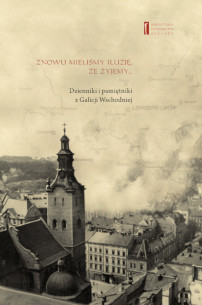
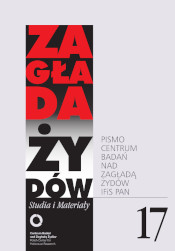
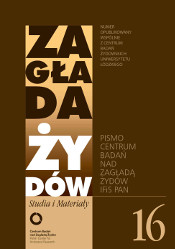
.jpg)
.jpg)
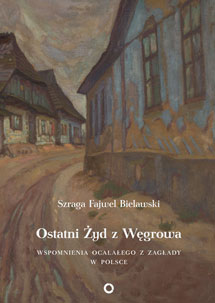
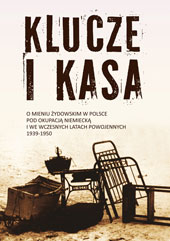
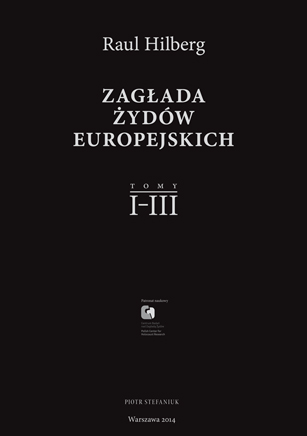
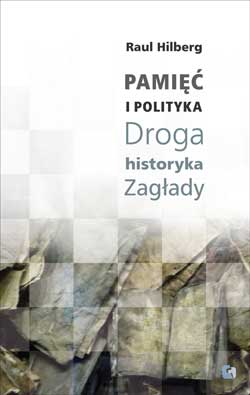
.jpg)
.jpg)
.jpg)
.jpg)
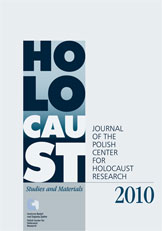

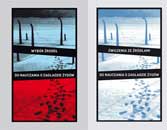
.jpg)
.jpg)
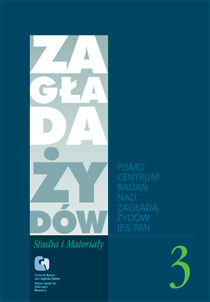
.jpg)
